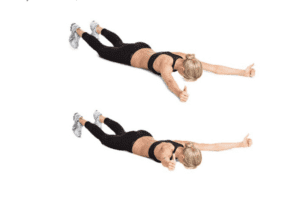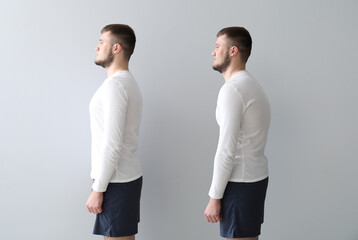Poor Posture and Pain: What Comes First?
Posture refers to your body as it aligns in space and how the alignment of each body part in relationship to one another and your environment is influenced by your joints. While your posture can be influenced by pain and poor posture can contribute to pain, posture is actually related to our own awareness of our body, which can either worsen or reduce our pain. Confused? Let’s dive further.
When evaluating patients with neck and/or back pain, a significant portion of the initial examination is posture. Within posture, a licensed physical therapist will consider the degree of forward head posture along with shoulder and shoulder blade position. Questions will be asked regarding daily routines and the varying positions a patient frequents throughout the day, such as sitting and standing posture. These details are important when determining the impact posture has on pain.
Once the initial evaluation is complete, if posture is determined to contribute to a person’s pain, our team will create a treatment plan to address posture and pain. Typically, posture and pain combine to cause physical impairments and mental components.
Physically, posture is improved by strengthening the muscles in the upper back and stretching tissues in the chest.
Three great examples of postural exercises are:
Rows with shoulder blade retraction to open up our posture

T’s and ‘Ys to further strengthen our postural muscles (middle and lower traps)
 Pectoral stretches to reduce the tightness in the front of our shoulders and chest
Pectoral stretches to reduce the tightness in the front of our shoulders and chest
 Additionally, there is a mental component to one’s posture by reinforcing and changing one’s ability to correct their own posture. It is nearly impossible to have perfect posture all day! And that’s not a bad thing. Our body likes to move, and movement creates flexibility, blood flow, and pain relief.
Additionally, there is a mental component to one’s posture by reinforcing and changing one’s ability to correct their own posture. It is nearly impossible to have perfect posture all day! And that’s not a bad thing. Our body likes to move, and movement creates flexibility, blood flow, and pain relief.
When working to improve your posture, it is helpful to consider the following four questions:
- How long have I been sitting or standing?
- What does my posture feel like now?
- If I could see myself in a mirror, what would I look like?
- Am I having any pain or discomfort right now?
These questions trigger body awareness, body image, and mindfulness, which are all elements associated with improving posture and pain.
The more opportunities you can “check in with yourself” the less likely you will allow bad posture to go on long enough to be a source of pain. The best way to build a good habit is to connect it to something we do every day. Check in with your posture when you’re brushing your teeth, sitting at a red light, sitting down to eat lunch, during an ad break on TV, or when that co-worker tells a bad joke for the fifth day in a row.
With these tips, you should be able to improve your posture, manage your pain, and generally improve your own understanding of your body and its relationship with movement.
If you’re in pain and believe it is related to your posture, consider scheduling an evaluation with one of our licensed therapists here at AzOPT! Call us at 623-242-6908 to book your appointment today, so that we can help you LIVE BETTER 🙂







